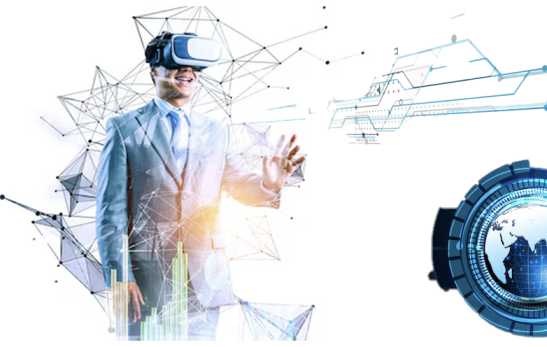Writing a problem-solution essay involves addressing a specific problem, proposing a solution, and supporting your ideas with evidence. Here’s a concise guide on how to structure and write a Duolingo/ PTE/ IELTS problem-solution essay:
1. Understand the Task:
Read the prompt to identify the problem and any specific instructions.
2. Plan Your Essay:
Analyse the problem, brainstorm solutions, and choose the most practical one.
3. Structure:
– Introduction (problem, significance, thesis)
– Body (problem details, proposed solution, evidence)
– Optional Counterarguments
– Conclusion (problem summary, solution reiteration)
4. Language and Style:
– Use formal, academic language.
– Avoid informal language and contractions.
5. Proofread and Manage Time:
– Check for errors.
– Allocate about 40 minutes for Task 2 during the IELTS exam.
Focus on clarity, evidence-based solutions, and coherence to excel in Duolingo/ PTE/ IELTS problem-solution essays.
Model problem-solution essays.
1. High fuel prices can strain household budgets. What challenges do high fuel prices pose, and what strategies can individuals and governments adopt to mitigate their impact?
2. Inadequate access to clean water can lead to health issues. What challenges does the lack of clean water access present, and what solutions can communities and governments implement to ensure clean water for all?
3. A shortage of skilled teachers affects the quality of education. What difficulties result from a lack of qualified teachers, and how can educational institutions and governments address this issue?
4. The overuse of single-use plastics contributes to environmental pollution. What problems stem from the excessive use of single-use plastics, and what measures can individuals and governments take to reduce plastic waste and promote eco-friendly alternatives?
5. Insufficient access to healthcare services creates disparities in health outcomes. What challenges arise from unequal healthcare access, and how can nations ensure that all citizens have equitable access to healthcare?
6. Climate change leads to more frequent and severe natural disasters. What problems result from climate-related disasters, and what global efforts can address climate change and its impact on vulnerable communities?
7. High rates of youth unemployment can lead to economic and social problems. What consequences does youth unemployment bring, and what policies and initiatives can increase job opportunities for young people?
8. Domestic violence affects many families. What challenges can result from domestic violence, and how can society better protect victims and reduce instances of domestic abuse?
9. Income inequality widens in many societies. What consequences does income inequality bring, and what policies can governments enact to reduce the income gap between the wealthy and the disadvantaged?
10. Cybersecurity threats can have devastating consequences for individuals and organizations. What problems result from cyberattacks, and what measures can be taken to enhance cybersecurity and protect digital assets?
11. Human trafficking remains a pressing concern worldwide. What problems can result from human trafficking, and how can countries collaborate to prevent human trafficking and support its victims?
12. Youth unemployment is a growing issue in many regions. What challenges can result from youth unemployment, and what initiatives can governments and businesses implement to create more job opportunities for young individuals?
13. Access to healthcare in rural areas is limited. What problems can result from this lack of healthcare access, and what steps can governments take to improve healthcare services in remote regions?
14. Bullying in schools can have serious consequences for students. How does bullying affect students, and what measures can be implemented to prevent and address bullying in educational settings?
15. Racial discrimination continues to be a problem in society. What issues can arise from racial discrimination, and what actions can individuals, communities, and governments take to combat racism and its consequences?
16. The global refugee crisis is straining resources and creating humanitarian challenges. What problems can result from the refugee crisis, and how can countries work together to support refugees and find long-term solutions?
17. The lack of affordable housing in major cities can result in housing crises. What difficulties can this housing shortage cause, and how can governments and organizations promote affordable housing initiatives?
18. Overpopulation strains resources and infrastructure in urban areas. What challenges can result from overpopulation, and how can governments manage population growth in a sustainable manner?
19. Food insecurity affects many households. What problems can result from food insecurity, and how can nations ensure that everyone has access to sufficient, nutritious food?
20. Gender inequality in the workplace continues to persist. What issues can arise from gender discrimination, and what actions can individuals, communities, and governments take to promote gender equality in professional settings?
21. Political corruption undermines trust in government. What challenges result from corruption, and what strategies can countries adopt to combat this issue and rebuild public trust?
22. The emigration of healthcare professionals is leaving a healthcare gap in many developing nations. What problems can result from this trend, and what measures can be taken to address the healthcare shortage?
23. Access to quality healthcare remains unequal in many regions. What difficulties result from healthcare disparities, and how can countries ensure equitable access to healthcare services for all citizens?
24. Rising fuel prices can strain household budgets. What challenges do high fuel prices pose, and what strategies can individuals and governments adopt to mitigate their impact?
25. The prevalence of single-use plastics contributes to environmental pollution. What negative consequences stem from the use of single-use plastics, and what measures can be taken to reduce plastic waste and promote eco-friendly alternatives?
26. Rural areas often lack access to clean drinking water. How does limited access to clean water impact communities, and what solutions can improve water accessibility in rural regions?
27. The increase in mental health issues among young people raises concerns. What challenges can result from this trend, and how can society enhance mental health support and awareness for the youth?
28. An aging population strains healthcare systems. What issues result from an aging society, and how can these challenges be effectively managed?
29. Inadequate access to clean water can lead to health issues. What challenges does the lack of clean water access present, and what solutions can communities and governments implement to ensure clean water for all?
30. A shortage of skilled teachers affects the quality of education. What difficulties result from a lack of qualified teachers, and how can educational institutions and governments address this issue?
31. The overuse of single-use plastics contributes to environmental pollution. What problems stem from the excessive use of single-use plastics, and what measures can individuals and governments take to reduce plastic waste and promote eco-friendly alternatives?
32. Insufficient access to healthcare services creates disparities in health outcomes. What challenges arise from unequal healthcare access, and how can nations ensure that all citizens have equitable access to healthcare?
33. Climate change leads to more frequent and severe natural disasters. What problems result from climate-related disasters, and what global efforts can address climate change and its impact on vulnerable communities?
34. High rates of youth unemployment can lead to economic and social problems. What consequences does youth unemployment bring, and what policies and initiatives can increase job opportunities for young people?
35. Domestic violence affects many families. What challenges can result from domestic violence, and how can society better protect victims and reduce instances of domestic abuse?
36. Income inequality widens in many societies. What consequences does income inequality bring, and what policies can governments enact to reduce the income gap between the wealthy and the disadvantaged?
37. Cybersecurity threats can have devastating consequences for individuals and organizations. What problems result from cyberattacks, and what measures can be taken to enhance cybersecurity and protect digital assets?
38. Human trafficking remains a pressing concern worldwide. What problems can result from human trafficking, and how can countries collaborate to prevent human trafficking and support its victims?
39. Youth unemployment is a growing issue in many regions. What challenges can result from youth unemployment, and what initiatives can governments and businesses implement to create more job opportunities for young individuals?
40. Access to healthcare in rural areas is limited. What problems can result from this lack of healthcare access, and what steps can governments take to improve healthcare services in remote regions?
41. Insufficient public transportation options in urban areas can lead to traffic congestion. What challenges does the lack of efficient public transportation pose, and how can cities improve public transit systems to reduce traffic congestion?
42. The rise of fast fashion contributes to environmental waste. What problems arise from the fast fashion industry, and what strategies can consumers and the fashion industry adopt to reduce waste and promote sustainable fashion practices?
43. Inadequate mental health support can lead to societal challenges. What difficulties result from the lack of mental health services, and how can governments and communities enhance mental health support and awareness to address this issue?
44. Corruption within the healthcare sector can harm patient well-being. What challenges result from healthcare corruption, and what measures can governments and institutions implement to combat corruption and improve healthcare quality?
45. Limited access to quality education affects marginalized communities. What consequences arise from unequal access to education, and how can governments and organizations ensure inclusive and equitable education for all?
46. The lack of affordable childcare services places a burden on working parents. What problems can result from unaffordable childcare, and how can governments and businesses support working parents with accessible and affordable childcare options?
47. Discrimination against the LGBTQ+ community creates societal disparities. What issues can arise from LGBTQ+ discrimination, and what actions can individuals, communities, and governments take to promote equality and inclusivity?
48. Insufficient mental health support for veterans leads to challenges in their reintegration into civilian life. What difficulties result from the lack of mental health services for veterans, and how can governments and organizations improve mental health support for veterans and their families?
49. The use of child labor in certain industries raises ethical and social concerns. What challenges arise from child labor, and what measures can governments, businesses, and consumers take to eliminate child labor practices?
50. Ageism in the workplace can hinder the employment of older individuals. What problems can result from age discrimination, and what actions can employers and governments take to promote age-inclusive workplaces and address the consequences of ageism?
51. The exploitation of natural resources harms the environment and communities. What challenges result from resource exploitation, and what strategies can governments and corporations adopt to ensure sustainable resource management and protect ecosystems?
52. The lack of affordable and accessible housing options for homeless individuals and families creates societal issues. What difficulties can result from homelessness, and how can governments, non-profit organizations, and communities provide shelter and support to address this issue?
53. Discrimination against individuals with disabilities hinders their full participation in society. What issues can arise from disability discrimination, and what actions can individuals, communities, and governments take to promote inclusivity and accessibility for people with disabilities?
54. The impact of social media on mental health raises concerns. What challenges can result from excessive social media use, and what strategies can individuals, educators, and tech companies adopt to promote healthy online interactions and mental well-being?
55. Language barriers limit communication and opportunities for immigrants. What problems can result from language barriers, and what measures can governments and communities implement to support language acquisition and integration for newcomers?
56. Inadequate public infrastructure, such as roads and bridges, can impede economic development. What challenges does insufficient infrastructure present, and how can governments invest in infrastructure improvements to stimulate economic growth and improve transportation systems?
57. The gender pay gap persists in many industries. What consequences does the gender pay gap bring, and what policies and actions can governments, businesses, and individuals take to achieve gender pay equity and empower women in the workforce?
58. Excessive use of social media among young people raises concerns about their well-being. What challenges can result from heavy social media use, and what strategies can parents, educators, and tech companies adopt to promote responsible online behavior and mental health among youth?
59. Discrimination and bias in criminal justice systems create inequality. What issues can arise from biased criminal justice practices, and what reforms can governments and institutions implement to ensure equal treatment and justice for all individuals, regardless of their background?
60. The spread of disinformation and fake news undermines trust in media and institutions. What problems result from the spread of false information, and what actions can individuals, media outlets, and tech platforms take to combat disinformation and promote media literacy?
61. The exploitation of natural resources harms ecosystems and indigenous communities. What challenges result from resource exploitation, and what strategies can governments and corporations adopt to ensure sustainable resource management and protect the rights of indigenous populations?
62. Inadequate access to affordable healthcare affects marginalized communities. What consequences arise from unequal healthcare access, and how can governments and organizations ensure equitable healthcare services for all, regardless of their socio-economic status?
63. Discrimination against minority religious groups leads to societal disparities. What issues can arise from religious discrimination, and what actions can individuals, communities, and governments take to promote religious freedom, tolerance, and inclusivity?
64. The digital divide limits technology access for many communities. What challenges can result from this technological disparity, and how can access to technology be improved for underserved populations?
65. Aging infrastructure poses risks to public safety. What problems can arise from outdated infrastructure, and what measures can governments take to invest in infrastructure renewal and ensure the safety of their citizens?
Sample answer by Lifestyle Training Centre
66. The global refugee crisis is straining resources and creating humanitarian challenges. What problems can result from the refugee crisis, and how can countries work together to support refugees and find long-term solutions?
67. Discrimination and bias in hiring practices create inequality. What issues can arise from biased hiring practices, and what actions can employers, governments, and institutions take to promote diversity, inclusivity, and equal employment opportunities?
68. Inadequate access to clean energy sources hinders sustainable development. What consequences arise from a lack of clean energy access, and what measures can governments and organizations implement to promote clean and renewable energy solutions?
69. The overuse of antibiotics contributes to antibiotic resistance. What problems does antibiotic resistance create, and how can the overuse of antibiotics be reduced to preserve their effectiveness?
70. Inadequate support for individuals with mental health conditions leads to societal challenges. What difficulties result from the lack of mental health services, and how can governments and communities enhance mental health support and awareness to address this issue?
71. Corruption within the political system undermines trust in government. What challenges result from political corruption, and what strategies can countries adopt to combat corruption, strengthen democratic institutions, and rebuild public trust?
72. Limited access to quality education affects marginalized communities. What problems can result from unequal access to education, and how can governments and organizations ensure inclusive and equitable education for all?
73. Ageism in the workplace can hinder the employment of older individuals. What challenges can result from age discrimination, and what actions can employers and governments take to promote age-inclusive workplaces and address the consequences of ageism?
74. The rise of fast fashion contributes to environmental waste. What problems arise from the fast fashion industry, and what strategies can consumers and the fashion industry adopt to reduce waste and promote sustainable fashion practices?
75. Domestic violence affects many families. What challenges can result from domestic violence, and how can society better protect victims and reduce instances of domestic abuse?
76. Discrimination against the LGBTQ+ community creates societal disparities. What issues can arise from LGBTQ+ discrimination, and what actions can individuals, communities, and governments take to promote equality and inclusivity?
77. The use of child labor in certain industries raises ethical and social concerns. What challenges arise from child labor, and what measures can governments, businesses, and consumers take to eliminate child labor practices?
78. Insufficient public transportation options in urban areas can lead to traffic congestion. What difficulties does the lack of efficient public transportation pose, and how can cities improve public transit systems to reduce traffic congestion?
79. Insufficient mental health support for veterans leads to challenges in their reintegration into civilian life. What problems can result from the lack of mental health services for veterans, and how can governments and organizations improve mental health support for veterans and their families?
80. The lack of affordable childcare services places a burden on working parents. What challenges can result from unaffordable childcare, and how can governments and businesses support working parents with accessible and affordable childcare options?
81. Discrimination against individuals with disabilities hinders their full participation in society. What issues can arise from disability discrimination, and what actions can individuals, communities, and governments take to promote inclusivity and accessibility for people with disabilities?
82. The impact of social media on mental health raises concerns. What challenges can result from excessive social media use, and what strategies can individuals, educators, and tech companies adopt to promote healthy online interactions and mental well-being?
83. Language barriers limit communication and opportunities for immigrants. What problems can result from language barriers, and what measures can governments and communities implement to support language acquisition and integration for newcomers?
84. Inadequate public infrastructure, such as roads and bridges, can impede economic development. What difficulties does insufficient infrastructure present, and how can governments invest in infrastructure improvements to stimulate economic growth and improve transportation systems?
85. The gender pay gap persists in many industries. What consequences does the gender pay gap bring, and what policies and actions can governments, businesses, and individuals take to achieve gender pay equity and empower women in the workforce?
86. Excessive use of social media among young people raises concerns about their well-being. What challenges can result from heavy social media use, and what strategies can parents, educators, and tech companies adopt to promote responsible online behavior and mental health among youth?
87. Discrimination and bias in criminal justice systems create inequality. What issues can arise from biased criminal justice practices, and what reforms can governments and institutions implement to ensure equal treatment and justice for all individuals, regardless of their background?
88. The spread of disinformation and fake news undermines trust in media and institutions. What problems result from the spread of false information, and what actions can individuals, media outlets, and tech platforms take to combat disinformation and promote media literacy?
89. The exploitation of natural resources harms the environment and communities. What challenges result from resource exploitation, and what strategies can governments and corporations adopt to ensure sustainable resource management and protect ecosystems?
90. Inadequate access to affordable healthcare affects marginalized communities. What consequences arise from unequal healthcare access, and how can governments and organizations ensure equitable healthcare services for all, regardless of their socio-economic status?
91. Discrimination against minority religious groups leads to societal disparities. What issues can arise from religious discrimination, and what actions can individuals, communities, and governments take to promote religious freedom, tolerance, and inclusivity?
92. The digital divide limits technology access for many communities. What challenges can result from this technological disparity, and how can access to technology be improved for underserved populations?
93. Aging infrastructure poses risks to public safety. What problems can arise from outdated infrastructure, and what measures can governments take to invest in infrastructure renewal and ensure the safety of their citizens?
94. The global refugee crisis is straining resources and creating humanitarian challenges. What problems can result from the refugee crisis, and how can countries work together to support refugees and find long-term solutions?
95. Discrimination and bias in hiring practices create inequality. What issues can arise from biased hiring practices, and what actions can employers, governments, and institutions take to promote diversity, inclusivity, and equal employment opportunities?
96. Inadequate access to clean energy sources hinders sustainable development. What consequences arise from a lack of clean energy access, and what measures can governments and organizations implement to promote clean and renewable energy solutions?
97. The overuse of antibiotics contributes to antibiotic resistance. What problems does antibiotic resistance create, and how can the overuse of antibiotics be reduced to preserve their effectiveness?
98. Inadequate support for individuals with mental health conditions leads to societal challenges. What difficulties result from the lack of mental health services, and how can governments and communities enhance mental health support and awareness to address this issue?
99. Corruption within the political system undermines trust in government. What challenges result
from political corruption, and what strategies can countries adopt to combat corruption, strengthen democratic institutions, and rebuild public trust?
100. Limited access to quality education affects marginalised communities. What problems can result from unequal access to education, and how can governments and organisations ensure inclusive and equitable education for all?
Unlock your IELTS success at Lifestyle Training Centre! With expert guidance, personalised coaching, and tailored feedback, we’ll help you master Writing Task 2 and achieve your dream band score. Join us today and elevate your preparation!
IELTS Speaking Task Topics
Click on any topic to explore more!
Names

Learn about the importance of names and their cultural significance.
Study / Job

Discuss various aspects of studying and working in different fields.
Hometown

Explore the charm of your hometown and its unique features.
Accomodation

Understand various types of accommodation and living situations.
Weather

Learn about how weather influences daily life and activities.
Time

Discuss the concept of time, its importance, and time management.
Television

Talk about the role of television in modern entertainment.
Museum

Discuss the cultural importance of museums and historical exhibits.
Holidays

Explore the significance of holidays and different celebrations.
Films

Learn about the impact of films on culture and society.
Leisure Time

Discuss how leisure activities impact personal well-being.
Sport

Talk about the role of sports in health, entertainment, and culture.
Vegetables and Fruits

Discuss the health benefits and importance of fresh produce.
Maths

Explore the role of mathematics in various aspects of life.
Sky

Discuss the beauty and scientific significance of the sky.
Clothes&Fashion

Explore how clothing reflects culture and personal expression.
Weekend

Discuss the importance of weekends and ways people relax.
Reading

Learn about the importance of reading and various reading habits.
Sleep

Explore how sleep impacts physical and mental well-being.
Trees&Plants

Discuss the environmental and health benefits of plants.
Newspaper

Discuss the evolving role of newspapers in the digital age.
Texting

Explore the role of text messaging in modern communication.
Memorising

Learn techniques for improving memory and memorization.
Travelling

Discuss the importance and impact of traveling in modern society.
Communication

Explore the modes and significance of communicating well
Letter&Email

Explore the differences and significance of letters vs. emails.
Swimming

Discuss the benefits of swimming for health and fitness.
Snacks

Explore the role of snacks in daily nutrition and lifestyle.
Photography

Discuss photography’s cultural and artistic significance.
Help

Talk about the importance of offering and receiving help.
History

Discuss historical events and their impact on modern society.
Handwriting

Explore the significance of handwriting in education and culture.
Music

Learn about the influence of music on emotions and society.
Colours

Discuss how colours affect perception and mood.
Teachers

Explore the role of teachers in shaping students’ futures.
Being Alone

Talk about the experience and benefits of spending time alone.
Teamwork

Learn the importance of teamwork in professional and social contexts.
Countryside & City

Explore the charm and benefits of living in the countryside.
Social Media

Discuss the impact of social media on society and relationships.
Friends

Explore the importance of friendships in life.
Artificial Intelligence (AI)

Talk about the future of AI and its role in society.
Climate Change

Discuss the causes and consequences of climate change.
Transportation

Explore different modes of transportation in your area.
Sustainable Transportation

Explore ways to make transportation more environmentally friendly.
Space Exploration

Learn about the latest advancements in space exploration.
Shopping

Explore how shopping influences culture and the economy.
Modern Technology

Discuss how modern technology is reshaping society.
Technology

Learn about the role of technology in everyday life.
Sustainable Living

Explore ways to live sustainably for the future of the planet.
Globalisation

Learn about the effects of globalisation on society and economies.
Global Warming

Discuss the causes, effects, and solutions to global warming.
Gender Equality

Explore the importance of gender equality in modern society.
Health and Fitness

Discuss the importance of maintaining a healthy lifestyle.
Renewable Energy

Learn about renewable energy sources and their impact on the environment.
Cultural Traditions in Kerala

Explore the unique cultural traditions of Kerala, your hometown.
Cultural Traditions in Your Country

Learn about the cultural traditions in your country.
Education System

Discuss the education system in your country and its effectiveness.
Traditional Cuisine

Explore the significance of traditional cuisines in your culture.
Do you need printed IELTS/ OET practice material? Place your order today. Available now for just Rs: 1,100 (including shipping all across India) Contact us at our WhatsApp number: +91 9886926773 to place your order. (Free for LTC students)

We hope this information has been valuable to you. If so, please consider a monetary donation to Lifestyle Training Centre via UPI. Your support is greatly appreciated.

Would you like to undergo training for OET, PTE, IELTS, Duolingo, Phonetics, or Spoken English with us? Kindly contact us now!
📱 Call/WhatsApp/Text: +91 9886926773
📧 Email: mail@goltc.in
Visit us in person by following the directions on Google Maps. We look forward to welcoming you to the Lifestyle Training Centre.
Follow Lifestyle Training Centre on social media:
Thank you very much!
